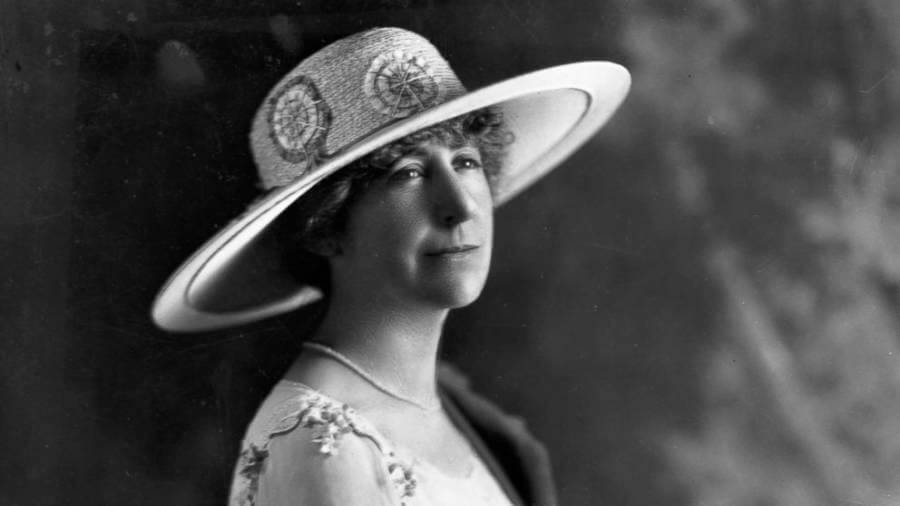Story of Jeanette Rankin – A Woman Was Elected to U.S. Congress Before Women Could Vote

I don’t think you heard the name Jeanette Rankin before today. But after reading a little bit about her life, you surely won’t forget that name any time soon.
Who Was Jeanette Rankin?
Jeanette Rankin was the first woman ever to be elected to the U.S. House of Representatives, in 1916, four years before women were even granted the right to vote in the United States.
- Jeanette Rankin was a trailblazer in the truest sense of the word. A fierce politician and advocate for women’s rights, Jeanette was responsible for championing women’s emancipation in the United States. She was the first woman but her journey opened the path for 400 women who have been elected as U.S. Representatives since her historic accession.
- In fact, to date, Jeanette remains the only woman to have been elected to the US. House of Representatives from Montana.
- Born on June 11, 1880, Jeanette was a bright young girl who took her education very seriously. From an early age, she immersed herself in education and work.
- Rankin graduated from Montana State University, with a degree in biology, in 1902 and taught for a short while before she dedicated her time towards becoming a seamstress.
- During a visit to San Franciso, Ranking found her true calling, in a way and was inspired by social work. She soon started working at the Telegraph Hill settlement house and furthered her career as she graduated from the prestigious New York School of Philanthropy, in 1909.
- She spent her time volunteering and helping children as well as working for the women’s rights movement that had started getting attention in the country at that point.
- Rankin began working on the women’s suffrage movement, the iconic movement that fought for the rights of women to vote. Her dedication and passion for the movement made a huge impact in Washington State, as it became the fifth state in the country to adopt women’s suffrage and soon she was promoted to field secretary of the National American Woman Suffrage Association(NAWSA).
- Inspired, Ranking went back to Montana to help when she heard that the women’s suffrage resolution was to be introduced in the state legislature. However, the ray of hope actually turned out to be part of an elaborate hoax as there was no intention of introducing women’s rights in the state legislature.
- Rankin wasn’t one to give up and surely, she convinced a lawmaker in Montana to introduce the resolution in the legislation and in 1911, became the first woman to address the Montana legislature, where she vehemently championed women’s suffrage. The women’s suffrage movement was dying in Montana but Rankin’s hard work and determination paid off as she ended up convincing more than half the Montana house to support her legislature. A sea-change was about to hit the country and Jeanette Rankin was at its helm.
- Rankin’s work and passion for the women’s rights movement were incomparable. As a representative of NAWSA, she was sent to 15 states across the country to revive the women’s suffrage movement and bring about a change in people’s ideologies and archaic ways of thinking. She organized suffrage groups all over the country and worked hard to introduce the law into state legislation.
- During this time, her work at home in Montana continued and in November 1914, after years of hard work and perseverance, women’s suffrage became law in Montana. But the story didn’t end here.
- Fresh off her victory in the women’s suffrage movement, Jeanette announced her candidacy in Montana in 1916. Through the efforts of the NAWSA and Jeanette, women in most of the states in the country had won the right to vote and many women ran for candidacy in 1916, with over 300 women applicants in Kansas!
- But Jeanette’s name was barely known outside of Montana. The Anaconda Copper Company employed the majority of the state and ran its newspapers as well and were responsible for keeping any word of Rankin’s candidacy out of the newspapers. But their petty attempts at subduing Jeanette were futile.
- A passionate activist, Jeanette was well known and lauded widely for her support on the issues of alcohol prohibition, children’s welfare and women’s suffrage among other significant issues of the Progressive Era. However, probably one of the most important aspects of the Rankin campaign was her commitment to pacifism and her consistent opposition to American interference in the Great War. Her principles and ideologies won the hearts of people across the state, who showed up and voted for her in the elections in 1916, making her the first woman to be elected to Congress in the United States of America.
- During her oath, Rankin vowed to represent and stand for the women of not only Montana but America. It was an iconic moment in the history of U.S. politics and the women’s rights movement as well.
- After being named Ranking Member of the new Suffrage Committee in 1917, Jeanette opened the debate on women’s suffrage on the House Floor and served as manager. Eventually, the suffrage resolution was passed with overwhelming margins in the Senate and when it was finally sent to the states, the Nineteenth Resolution (abolishing the right to prevent a person from voting on the basis of gender) was ratified and added to the United States Constitution in August 1920. Women in America finally had the right to vote.
- The contribution of Jeanette Rankin to women’s rights and the suffrage movement is insurmountable. Her effort and work brought about a tangible change in U.S. society and politics for women. She not only fought for women’s rights but for civil rights and when she was reelected in 1940, she was the only House Member who voted against the declaration of war on Japan after Pearl Harbour. She was headstrong and stuck to her principles always and has thus been immortalized in U.S. history as a trailblazer.






Responses